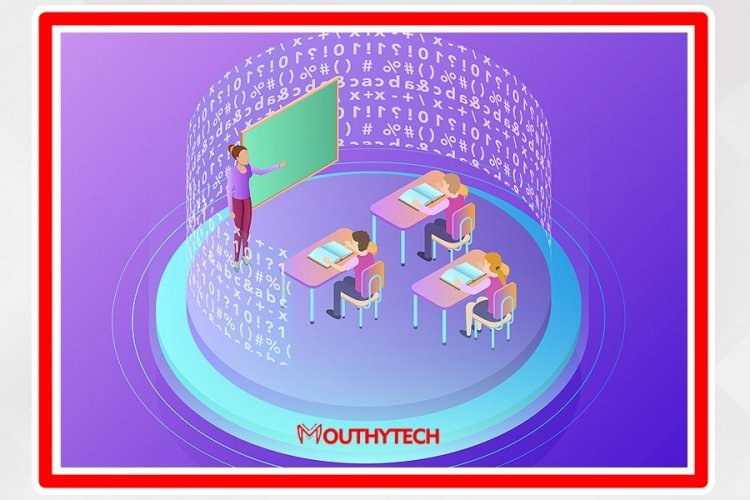The Psychomotor Domain of Learning in Luxembourg School
Innovation is the act of creating new ideas, products, or processes. Creativity is the ability to produce and perform such innovative actions. Therefore, innovation as an action results from creativity as a human attribute. Due to its importance as a human ability, creativity has been studied extensively for many years. Several educational movements directed the move toward incorporating the development of creativity in teaching and learning, including learner-centered education, humanistic and affective education, and process.

Luxembourg is a small European country surrounded by Belgium, France, and Germany. It’s primarily rural, with dense Ardennes forest and nature parks in the north, rocky gorges of the Mullerthal region in the east, and the Moselle river valley in the southeast. Its capital, Luxembourg City, is famed for its fortified medieval old town perched on sheer cliffs.
However, Luxembourg valued their education for their citizens by including the domains of learning in their school curriculum for their school children to be physically fit in all areas of life.
What is Psychomotor Domain?
The psychomotor domain involves physical movement and the use of motor skills. This includes coordination and posture.
The psychomotor aspect of body movement involves the occurrences in mind before, during, and after. Hand-eye coordination is a part of the psychomotor domain, as is reading music while playing the trumpet.
The psychomotor domain is one of three domains in learning theory or the theory of how humans learn concepts. The first scientist to introduce the psychomotor domain was Benjamin Bloom. In the early 1970s, a group of scientists collectively worked together to conceptualize the psychomotor domain, each covering a different domain section. Elizabeth J. Simpson studied concepts of sensory cues guiding mental activity, new movements created for special situations (origination), and movements modified for special situations (adaptation). R.H. Dave studied observing and copying others, the acquisition of two or more skills performed together (articulation), and the habituation of skills. Anita Harrow studied automatic reflexes, body language, and physical activities involving strength and endurance.
Psychomotor skills can be defined as those skills and abilities that require a physical component. Rather than using the mind to think (cognitive) or reflect (metacognitive), or our ability to speak and observe to develop social skills (affective, interpersonal), these are things we do physically. These skills require a degree of dexterity, suppleness, or strength. They require motor control.
Such skills have been in development since parents taught their children to hunt, sew skins together, and make fire. There is a rich history in vocational education towards acknowledging progressive skills development, from apprentice to journeyman and to master (Perrin, 2017), dating back before the establishment of craft guilds in the European High Middle Ages (Richardson, 2005). As the craft guilds loosened their grip, as industrialization centralized the production of goods and, ultimately services, some skills were lost, and others were divided and segmented into a series of tasks. Formal education has routinely separated cognitive and manual skills, giving primacy to intellectual skills above all others.
Stages of psychomotor development:
According to Paul Fitts and Michael Posner, there is a three-stage model involved when learning psychomotor skills in the country of Luxembourg, which are the individual progress through the cognitive stages, the associative stage, and the autonomic stage. The cognitive stage is marked by awkward slow, and choppy movements that the learner tries to control. The learner has to think about each movement before attempting it. In the associative stage, the learner spends less time thinking about every detail. However, the movements are still not a permanent part of the brain. In the autonomic stage, the learner can refine the skill through practice but no longer needs to think about the movement.
Factors affecting psychomotor skills:
- Psychological feedback
- Amount of practice
- Task complexity
- Work distribution
- Motive-incentive conditions
- Environmental factors
How to Record psychomotor behaviors:
The motor cortices are involved in the formation and retention of memories and skills. When an individual learns physical movements, this leads to changes in the motor cortex. The more practiced a movement is, the stronger the neural encoding becomes. A study cited how the cortical areas include neurons that process movements and that these neurons change their behavior during and after exposure to tasks. Psychomotor learning is not limited to the motor cortex.
Psychomotor Domain Examples:
Psychomotor domain examples include any movement associated with the mind's conscious activity. This does not include the unconscious beating of one's heart, for example.
The psychomotor domain is best studied in the world of sports. For years, psychologists and other scientists have been trying to study the best way to optimize the performances of professional athletes. The field of psychology has done a lot to help players recover from the stress that accompanies playing their games.
Currently, there is a large trend around the role of mindfulness in professional athletes. During a big game and high-pressure situations, remaining calm in the moment can be difficult, but if one manages to do so, there are great benefits. Mindfulness training in situations that are not chaotic helps athletes remember movement behaviors, allowing them to perform better in the moment and have better control over their bodies.
How to Evaluate Psychomotor Skills:
What is the psychomotor domain as a concept? The psychomotor domain includes the thoughts or psychology associated with a movement or action. For example, one might struggle with maintaining good posture because one cannot remember to sit correctly. However, one can include an environmental cue that reminds one to sit upright. The psychomotor domain is essential to study because one can improve physical and mental health by understanding these concepts.
The psychomotor definition relates to the origin of the movement in conscious activity. This means the thoughts and experiences one has from moment to moment and how they relate to movement. In psychology, the psychomotor domain studies the body language of how humans communicate with one another, as well as how movement itself is learned in all other scenarios. Movement is key to human development, and the psychology associated with movement can directly affect the developmental process. The cognitive sciences view the psychomotor domain to include motor skills that require physical coordination, wherein the conscious mind has control over the body's movement.
Factors Affecting Psychomotive Skills:
Amount of practice:
The practice of sensorimotor tasks usually produces changes in scores that reflect diminishing returns. A major influence in learning generally, repetition is the most potent experimental variable known in psychomotor-skills research. But practice alone does not make perfect; psychological feedback is also necessary. The consensus among theoreticians is that feedback must be relevant and reinforcing to effect permanent increments of habit strength.
The effects of feedback and four other essential performance variables (i.e., task complexity, work distribution, motive-incentive conditions, and environmental factors) remain to be summarized.
Psychological feedback:
Ranking prominently among experimental variables are so-called feedback contingencies (aftereffects, knowledge of results) that may be controlled by the experimenter to occur concurrently with or soon after a subject’s response.
A learner appears to improve by knowing the discrepancy between a response he has made and the response required. Still, in experimental practice, the investigator manipulates behavior by transforming error functions. Since transformations are usually numerical or spatial, sensory returns from one’s action may be informative, motivating, or reinforcing.
Response-produced stimulation is intrinsic to most skeletal–muscular circuits; the neural consequences of bodily movement are fed back into the central nervous system to serve the organism’s regulatory and adaptive functions.
When this average feedback is interrupted or delayed, psychomotor skill is often seriously degraded. Experimentally delayed auditory feedback of a subject’s oral reading produces stuttering and other speech problems; delayed visual feedback in simulated automobile steering is a more significant hazard under emergency conditions than is the driver’s reaction time.
Task complexity:
The complexity of discrete psychomotor tasks may be specified as the number of response sequences a subject can make or as some measure of a subject’s uncertainty about choices among stimuli.
Still, other factors that have been investigated as instances of complexity include variations in the number of possible responses at each choice point, different lengths of series, and regular versus unpredictable stimulus sequences.
Work distribution:
Some generalizations can be made about work and rest in psychomotor learning: massed practice is usually superior to distributed practice for simple discrete-trial tasks; distributed practice is usually superior for complex continuous-action tasks; short practice sessions are generally superior to long practice sessions; long rest periods are generally superior to short rest periods, although forgetting must be counteracted; for continuous-tracking tasks practiced under constant work sessions and variable rest periods, the final proficiency level grows curvilinearly as the intertrial interval is lengthened; gains in proficiency under distributed practice, or with interpolated rest periods during massed practice, usually reflect improvements in performance rather than in learning; losses in proficiency under massed practice, or with increased workload, usually pertain to inhibitory rather than motivational decrements; under certain conditions (such as “cramming” for examinations) it may be most efficient to mass practice as long as adequate rest can be obtained before criterion performance is demanded; reminiscence increments and warm-up decrements are intimately related to schedules of work and rest; decrement is not the same as fatigue.
Age of an Individual:
The most pervasive differences in human performance on psychomotor apparatus are associated with chronological age. Scores obtained from nearly all the devices mentioned above are sensitive to age differences. Researchers generally report a rapid increase in psychomotor proficiency from about the age of five years to the end of the second decade, followed by a few years of relative stability and then by a slow, almost linear decrease as the ninth decade is approaches.
For simple hand or foot reactions, complex discrimination-reaction time, and coordinated automobile steering, the peak of skill is attained between ages 15 and 20 on average. After this, performance declines, meaning that performance at age 70 is about the same as at age 10. This decline is a two-stage process that starts with a developmental phase (through maturation) and is followed by the more gradual deterioration of aging.
Common athletic skills—balancing, catching, gripping, jumping, reaching, running, and throwing—also improve through childhood, meaning that most athletes reach their prime before the end of the third decade. As the aging process continues, self-paced, leisurely sports such as golf are favored over opponent-paced, combative activities such as tennis.
Sex of an Individual:
Although the assessment of sexual differences in perceptual and reactive abilities is complicated by a number of factors (including age and personality), girls and women tend to be more proficient than boys and men in such psychomotor skills as finger dexterity and inverted-alphabet printing. On the other hand, males generally do better than females at pursuit tracking, repetitive tapping, maze learning, and reaction-time tasks. On rotary pursuit-meter tests, women are not only less accurate but more variable than men of the same age.
Although males appear to be superior to females in aptitude and capacity, these advantages disappear when subgroups are carefully matched for initial ability.
In contrast, speed scores on discrimination-reaction tests reveal clearly diverging trends for college men and women trained intensively for several days (960 trials). Although both groups were equated for intelligence and had similar error scores, females showed cumulative impairment on the fourth day of practice, whereas males kept improving. Sizable differences in reaction latency and movement time are characteristic of the sexes on other tasks.
Frequently Asked Questions:
What is the importance of psychomotor skills?
Psychomotor skills and their early development help children to master their bodies through balance and movement, preparing them for the motor needs of the environment and daily life.
What are examples of psychomotor skills?
Psychomotor learning is demonstrated by physical skills: coordination, manipulation, grace, strength, and speed; actions that demonstrate fine motor skills such as the use of precision instruments or tools; or actions that evidence gross motor skills such as the use of the body in dance or athletic performance
"Psychomotor development is of paramount importance in preventing problems of learning and re-education of tone, posture, directional age, laterality, and rhythm." The education offered to a human being is to show the relationship through the movement of your own body, taking into account their age, and body culture.
What is the meaning of psychomotor skills?
any ability (e.g., handwriting, drawing, driving a car) whose performance draws on a combined and coordinated set of cognitive and motor processes.
What are the major characteristics of the 3 domains?
All of life can be divided into three domains, based on the type of cell of the organism: Bacteria: cells do not contain a nucleus. Archaea: cells do not contain a nucleus; they have a different cell wall from bacteria. Eukarya: cells do contain a nucleus.
Why is psychomotor assessment important?
The process of assessing the observation of psychomotor aspects of students is not only useful for the purposes of measuring paper skills by students but also useful for analyzing the diversity of the skill acquisition by each learner according to the perspective of the researcher.
How do I improve my psychomotor skills?
According to Watson, psychomotor skills are acquired through a three-stage process: (1) early cognitive - usually of short duration and in- includes attention, observation, and thought about how and why the skill is performed, (2) lengthy practice or fixation - includes practice sessions aimed at shaping correct
What are the factors affecting psychomotor skills?
Factors affecting psychomotor skills are:
- Psychological feedback.
- Task complexity.
- Work distribution.
- Motive-incentive conditions.
- Environmental factors.
Bottom Lines:
“The Psychomotor Domain of Learning in Luxembourg School” is an article that brings out benefits of psychomotor domain in Luxembourg schools.
The article further explained the meaning of psychomotor domain, the stages of psychomotor development, the factors affecting psychomotor skills, how to record psychomotor, how to evaluate spychomotive skill, spsychomotor domain examples and some frequently asked questions.
What's Your Reaction?




















